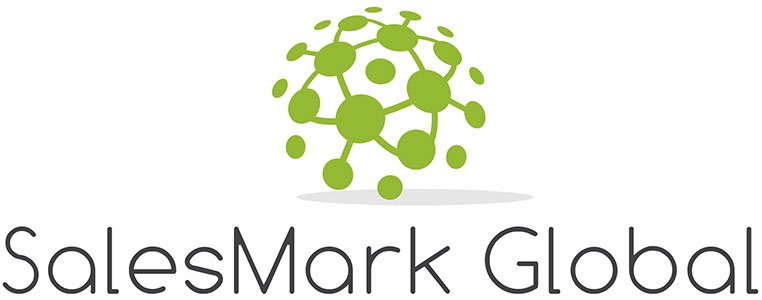Uncover the timeless impact of Account-Based Marketing in 2024. Discover how ABM is revolutionizing B2B marketing with tailored engagement and significant ROI.
Table of Contents
1. Timing is Everything: Telling When to Use ABM
2. The Untold Secrets of ABM: 5 Essential Rules for Success
2.1 Prioritize High-Value Enterprise Accounts
2.2 Target High-Value Products
2.3: Embrace ABM-Lite for Mid-Tier Accounts
2.4: Regularly Update your Target Account List
2.5 seamlessly Integrates with Other Demand-Generation Activities
3. The Limits of Scaling: Why ABM Doesn’t Work at Scale
4. Real-Time Data and Examples
Conclusion
Account-Based Marketing (ABM) has been a staple in the B2B marketing toolkit for years, but with the rapid evolution of digital marketing strategies, the question arises: Will ABM be effective for B2B in 2024? The answer is, by and large, yes, but of course with vital modifications and changes. This article will explore the strategic timing for deploying ABM, the critical rules for its success, and the pitfalls to avoid when scaling.
1. Timing is Everything: Telling When to Use ABM
ABM is an account-based or targeted approach to marketing that is aimed at specific accounts as opposed to an unsaturated mass approach to marketing. ABM should be launched when your company has all the necessary information about its most valuable customers and has enough time and employees to deliver high-quality campaigns. It is particularly useful for organizations whose sales involve several steps and costly products or services.
Conversely, ABM may not be effective if your company is at an early stage of development with minimal resources and no clear definition of the target audience. Implementing ABM prematurely or without a proper strategy in place will inevitably result in suboptimal outcomes.
2. The Untold Secrets of ABM: 5 Essential Rules for Success
Here are five essential rules for success of your ABM strategy in 2024:
2.1 Prioritize High-Value Enterprise Accounts
The strength of ABM is its focus on creating intense marketing experiences for target accounts. Thus, it is necessary to target high-value enterprise accounts where the potential ROI would be high enough to justify investing the resources. For example, a technology solutions provider may choose to focus on large enterprises and then create targeted content and communication initiatives that relate to specific problems affecting large organizations.
2.2 Target High-Value Products
Not every product or service requires the intense focus of ABM. Narrow your ABM programs to select products of greatest importance to your company’s revenue. For instance, a cybersecurity company should aim at selling stronger enterprise security products instead of dampening the market with lower-revenue products in an ABM approach.
2.3: Embrace ABM-Lite for Mid-Tier Accounts
Traditional ABM is expensive and time-consuming because it involves high levels of personalization; ABM Lite focuses on mid-market accounts and includes fewer research and preparation steps. This approach combines some aspects of one-to-one marketing with more general marketing strategies, offering a combination of individualization and reach. ABM-Lite keeps moving forward without creating too much strain on people and budgets.
2.4: Regularly Update your Target Account List
The business environment continues to evolve, and therefore, your target accounts must evolve as well. Maintaining a clean account list facilitates working on the leads that are truly important and valuable. This entails extensive market research and analysis to obtain a list of new high-potential accounts and then adapt your plan based on that information.
2.5 seamlessly Integrates with Other Demand-Generation Activities
ABM should not exist in a silo. Ensure that ABM is aligned with other demand-generation activities like content marketing, social media campaigns, SEO, etc. This helps in reducing gaps in communication and also makes the message more effective since it reaches a wider and deeper coverage in the various communication channels.
3. The Limits of Scaling: Why ABM Doesn’t Work at Scale
Another misconception about ABM is that it is easily scalable, like traditional marketing techniques. But the key advantage of ABM is that it is highly personalized, and such a level of personalization is almost impossible to achieve at scale without losing its impact. Rather than trying to expand ABM by applying it to all businesses, concentrate on developing and improving personalized advertising and marketing for specific customers. This strategy will help to ensure that your efforts are not merely wastes of money and do not foster excessive engagement.
4. Real-Time Data and Examples
In 2024, such companies as Salesforce and Microsoft will successfully use ABM to focus on the most valuable accounts. Salesforce employs the traditional, highly personalized ABM campaign for its ‘flagship’ clients, which incorporates personal content, dedicated events, and account team servicing for maximum engagement and conversion.
In addition, recent figures from a Forrester survey in 2024 show that companies that adopt an ABM strategy average a 20% increase in deal value compared to firms that use traditional marketing approaches. These findings reinforce the idea that ABM remains a valuable and beneficial approach, as long as it is used properly.
Conclusion
Our research shows that ABM is still considered highly effective in 2024 as long as it is used in the right stage of the sales cycle and carried out effectively. Using ABM-Lite and targeting more valuable accounts and products, updating target lists, and collaborating with overall marketing strategies will help companies achieve ABM’s full potential. Nevertheless, it is essential to note that ABM is not a mass-scale strategy and therefore cannot be considered a scalable framework. These details will be essential for further exploiting ABM in today’s ever-changing marketing environment.
Discover SalesMarkBlog for Strategies That Propel Your Business Forward!





